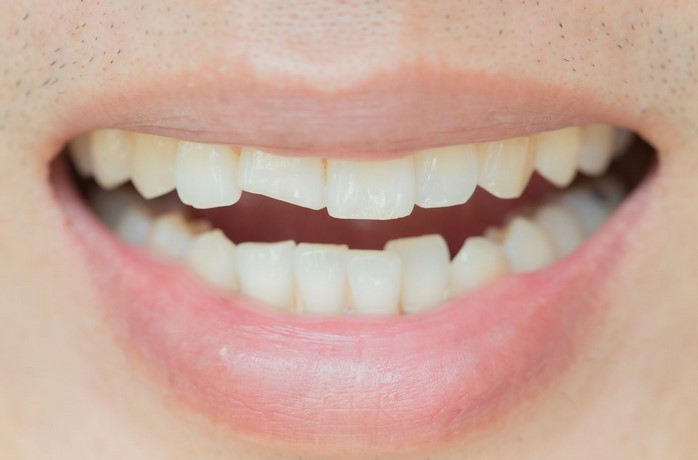
Having a broken tooth can be a very uncomfortable and embarrassing experience. It can also be a source of pain and discomfort. Fortunately, there are a variety of dental solutions available to help repair and restore a broken tooth. From simple bonding to more complex procedures such as root canals and crowns, there are a number of ways to fix a broken tooth. In this article, we will discuss the different dental solutions available to repair a broken tooth and how to determine which one is best for you. We will also discuss the importance of seeking professional dental care to ensure the best outcome.
How to Repair a Broken Tooth: Exploring Different Dental Solutions
Having a broken tooth can be a painful and embarrassing experience. Fortunately, there are a variety of dental solutions available to repair a broken tooth. This article will explore the different options available to repair a broken tooth, including the advantages and disadvantages of each.
The first option for repairing a broken tooth is a dental crown. A dental crown is a cap that is placed over the broken tooth to restore its shape, size, and strength. The crown is made of either porcelain, metal, or a combination of both. The advantage of a dental crown is that it can be used to restore the tooth to its original shape and size. The disadvantage is that it can be expensive and may require multiple visits to the dentist.
The second option for repairing a broken tooth is a dental filling. A dental filling is a material that is used to fill in the space created by the broken tooth. The material used for a dental filling can be either composite resin, porcelain, or gold. The advantage of a dental filling is that it is relatively inexpensive and can be completed in one visit to the dentist. The disadvantage is that it may not be as strong as a dental crown and may need to be replaced more often.
The third option for repairing a broken tooth is a dental bridge. A dental bridge is a false tooth that is attached to the adjacent teeth to replace the broken tooth. The advantage of a dental bridge is that it is strong and can last for many years. The disadvantage is that it can be expensive and may require multiple visits to the dentist.
The fourth option for repairing a broken tooth is a dental implant. A dental implant is a titanium post that is surgically placed into the jawbone to replace the broken tooth. The advantage of a dental implant is that it is strong and can last for many years. The disadvantage is that it can be expensive and may require multiple visits to the dentist.
No matter which option you choose to repair your broken tooth, it is important to discuss the advantages and disadvantages with your dentist. Your dentist will be able to provide you with the best advice for your particular situation. With the right dental solution, you can restore your broken tooth and get back to smiling with confidence.
Understanding the Causes of Tooth Damage and How to Prevent It
Tooth damage is a common problem that can have a significant impact on oral health. It can be caused by a variety of factors, including poor oral hygiene, diet, and lifestyle habits. Understanding the causes of tooth damage and how to prevent it is essential for maintaining good oral health.
Poor oral hygiene is one of the most common causes of tooth damage. When plaque and tartar are allowed to accumulate on the teeth, they can cause cavities, gum disease, and other forms of tooth decay. To prevent this, it is important to brush and floss regularly and to visit the dentist for regular check-ups and cleanings.
Diet is another major factor in tooth damage. Sugary and acidic foods and drinks can erode the enamel of the teeth, leading to cavities and other forms of decay. To prevent this, it is important to limit the consumption of sugary and acidic foods and drinks and to brush and floss after consuming them.
Lifestyle habits can also contribute to tooth damage. Smoking and drinking alcohol can both cause staining and discoloration of the teeth, as well as an increased risk of gum disease. To prevent this, it is important to quit smoking and limit alcohol consumption.
In addition to these preventive measures, it is also important to wear a mouthguard when playing contact sports or engaging in other activities that could cause trauma to the teeth. Wearing a mouthguard can help to protect the teeth from damage.
By understanding the causes of tooth damage and taking steps to prevent it, it is possible to maintain good oral health. Regular brushing and flossing, limiting sugary and acidic foods and drinks, quitting smoking, and wearing a mouthguard when engaging in contact sports are all important steps to take to prevent tooth damage.
Conclusion
In conclusion, a broken tooth can be fixed with a variety of dental solutions. Depending on the severity of the damage, a dentist may recommend a filling, crown, root canal, or even a dental implant. It is important to seek professional dental care as soon as possible to prevent further damage and to ensure the best possible outcome. With the right treatment, a broken tooth can be restored to its original condition.